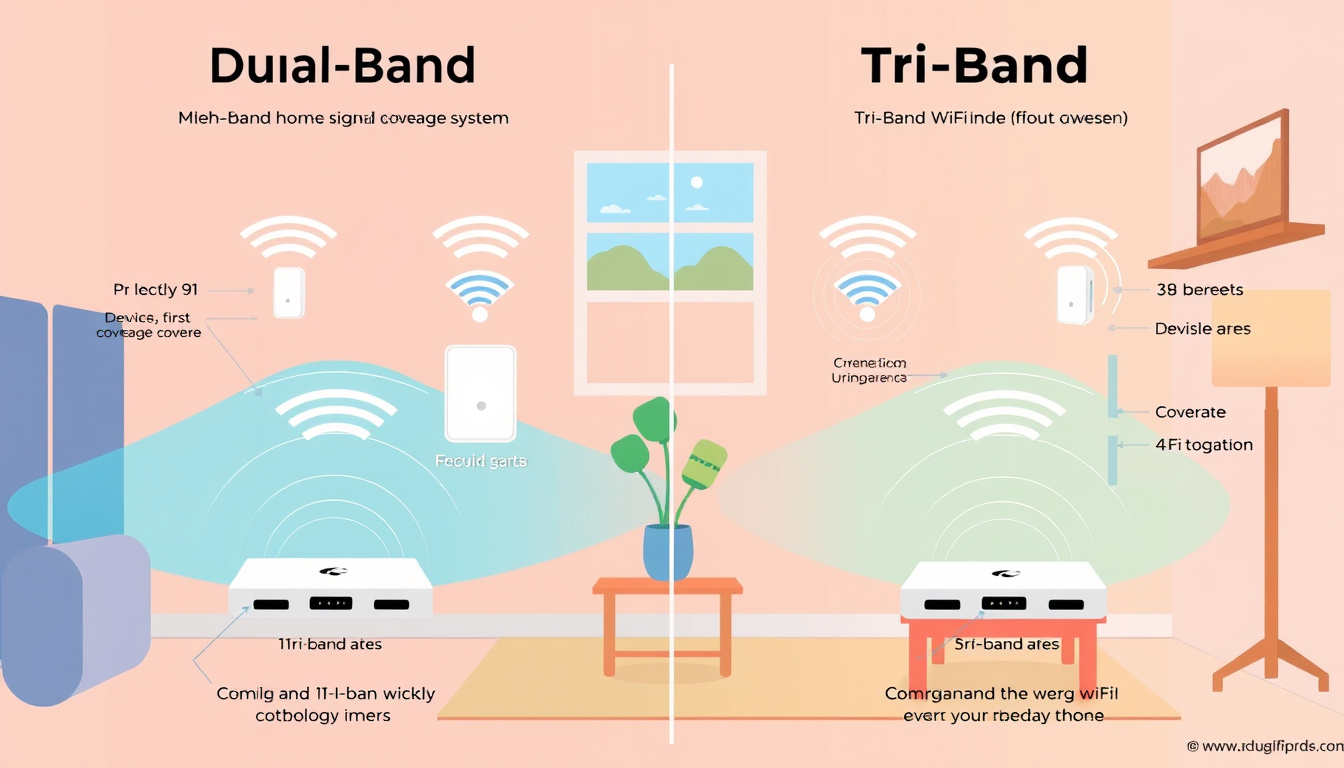When it comes to setting up a home Wi-Fi network, choosing the right equipment can make all the difference in your daily internet experience. Among the options available, dual-band and tri-band mesh systems are two popular choices. But what exactly are the differences between these systems, and which one is right for you? This guide will help you navigate the features and benefits of dual-band and tri-band mesh networks, aiding you in making an informed decision tailored to your needs.
Understanding Dual-Band and Tri-Band Technologies
Dual-Band Mesh Systems
Dual-band mesh systems operate on two frequency bands: 2.4 GHz and 5 GHz. The 2.4 GHz band is widely used and offers a longer range but lower speeds, making it suitable for basic tasks like browsing and checking emails. In contrast, the 5 GHz band provides faster speeds and is ideal for activities requiring more bandwidth, such as video streaming and gaming. By utilizing both bands, dual-band systems can better manage network traffic and accommodate multiple devices.
Benefits of Dual-Band Mesh Systems:
- Affordability: Generally, dual-band systems are less expensive compared to their tri-band counterparts, making them accessible for budget-conscious consumers.
- Simplicity: Perfect for smaller households or those with fewer internet-connected devices, dual-band systems can efficiently handle everyday online activities without overcomplicating the network.
- Compatibility: Extensive compatibility with older devices that may only connect on the 2.4 GHz band.
Limitations of Dual-Band Mesh Systems:
- Speed and Range: While 5 GHz offers speed, it has a shorter range compared to 2.4 GHz, which may impact performance in larger homes.
- Traffic Management: Congestion can occur when multiple devices are active, leading to reduced speeds and performance.
Tri-Band Mesh Systems
Tri-band mesh systems take dual-band technology a step further by incorporating a second 5 GHz band. This additional band serves as an exclusive traffic lane, enabling faster data transfer rates and enhanced performance in environments with numerous connected devices.
Benefits of Tri-Band Mesh Systems:
- Higher Capacity: With two 5 GHz bands, tri-band systems can handle a higher number of simultaneous connections without sacrificing speed, making them ideal for smart homes with many active devices.
- Improved Performance: Better suited for heavy online activities, such as gaming or 4K video streaming by distributing the load more effectively across the bands.
- Future-Proofing: As smart home technology continues to evolve, investing in a tri-band system ensures that your network is equipped to handle future devices effortlessly.
Limitations of Tri-Band Mesh Systems:
- Cost: Typically, tri-band systems are more expensive and might not be economically justifiable for smaller households or less demanding internet usage.
- Overkill for Low Demand: If you have a few devices and require basic browsing, a tri-band system may be unnecessary, leading to wasted resources.

Evaluating Your Needs
When deciding between a dual-band and tri-band mesh system, it’s essential to consider the following factors:
-
Household Size and Device Count: Larger families with many connected devices, such as smartphones, tablets, smart TVs, and gaming consoles, will benefit from the advanced capabilities of tri-band systems. Smaller households may find dual-band systems sufficient.
-
Types of Activities: If your household frequently engages in online gaming, video conferencing, or streaming, tri-band systems can significantly improve your experience by reducing lag and buffering time.
-
Future Growth: Think about potential future needs. If your home might evolve into a smart home with numerous IoT devices, a tri-band system could offer better longevity.
-
Budget: Your financial constraints will inevitably guide your decision. Dual-band options are much more budget-friendly and ideal for average internet users.
Conclusion
In the battle of dual-band vs. tri-band mesh systems, the best choice ultimately depends on your unique needs, budget, and future plans. Both systems have their strengths, making them suitable for different users. Dual-band systems provide a solid and reliable foundation for small households or casual internet users, while tri-band systems offer cutting-edge performance for larger homes with demanding internet usage. By carefully assessing your requirements, you can select a Wi-Fi solution that enhances your connectivity and meets your expectations.



